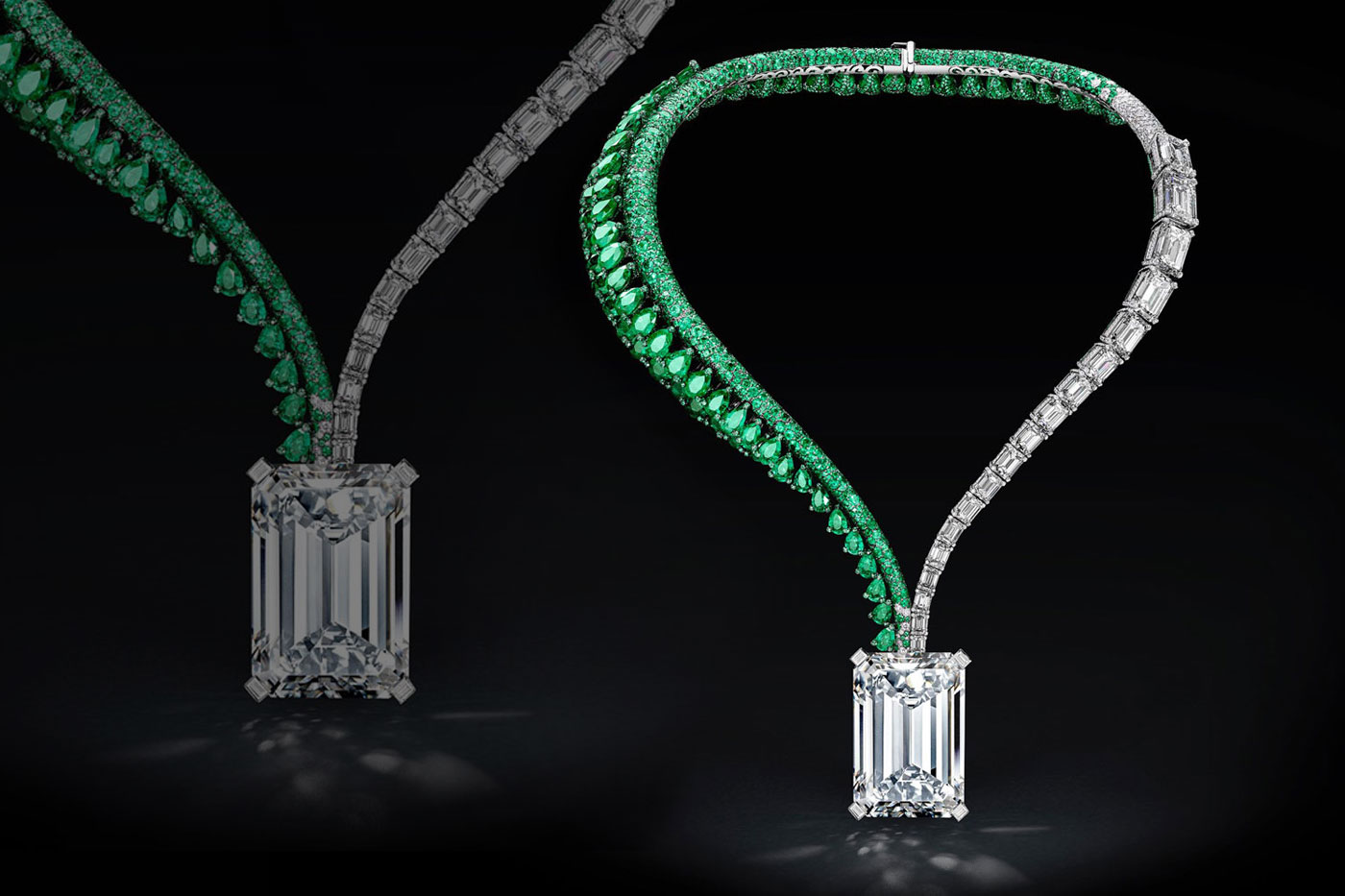
Perfectly clear
De Grisogono Necklace, $33,705,994
Christie's Geneva November 14, 2017
A diamond and emerald necklace featuring a record-shattering 163.41 carat "D" flawless diamond, designed and offered by de Grisogono, was sold at Christie's Geneva, for $33,705,994. The emerald-cut center stone is suspended from an asymmetrical necklace comprising of a double row of precisely matched pear-shaped emeralds, opposite a row of calibré-cut rectangular diamonds, in diminishing sizes. The design offered a perfect frame for the monumental center stone, the largest stone of this quality ever offered at auction.
While there are technical ways to describe a diamond that are set down scientifically, these rubrics are still open to interpretation via the judgment calls of human graders. A "D" color diamond has no discernible body color, while a flawless diamond has no visible imperfections under 10-power magnification. Yet not all "D" flawless diamonds are beautiful. The art of a skilled cutter and the quality of the original piece of rough diamond both play their roles in the creation of a truly beautiful diamond. These qualities are rarely found in polished diamonds weighing more than 100 carats. Rectangular cut diamonds do not offer the brilliance or fire of their multi-faceted cousins. Indeed, it is their broad planes that entice the viewer to peer deeply into the stone, to understand its perfection. This diamond was cut from a 404.20 carat rough, mined in the African nation of Angola. Losing more than half their original weight after cutting is typical for diamonds. Yet the price paid for the final necklace appears somewhat modest, considering that the rough was purchased for $16 million.
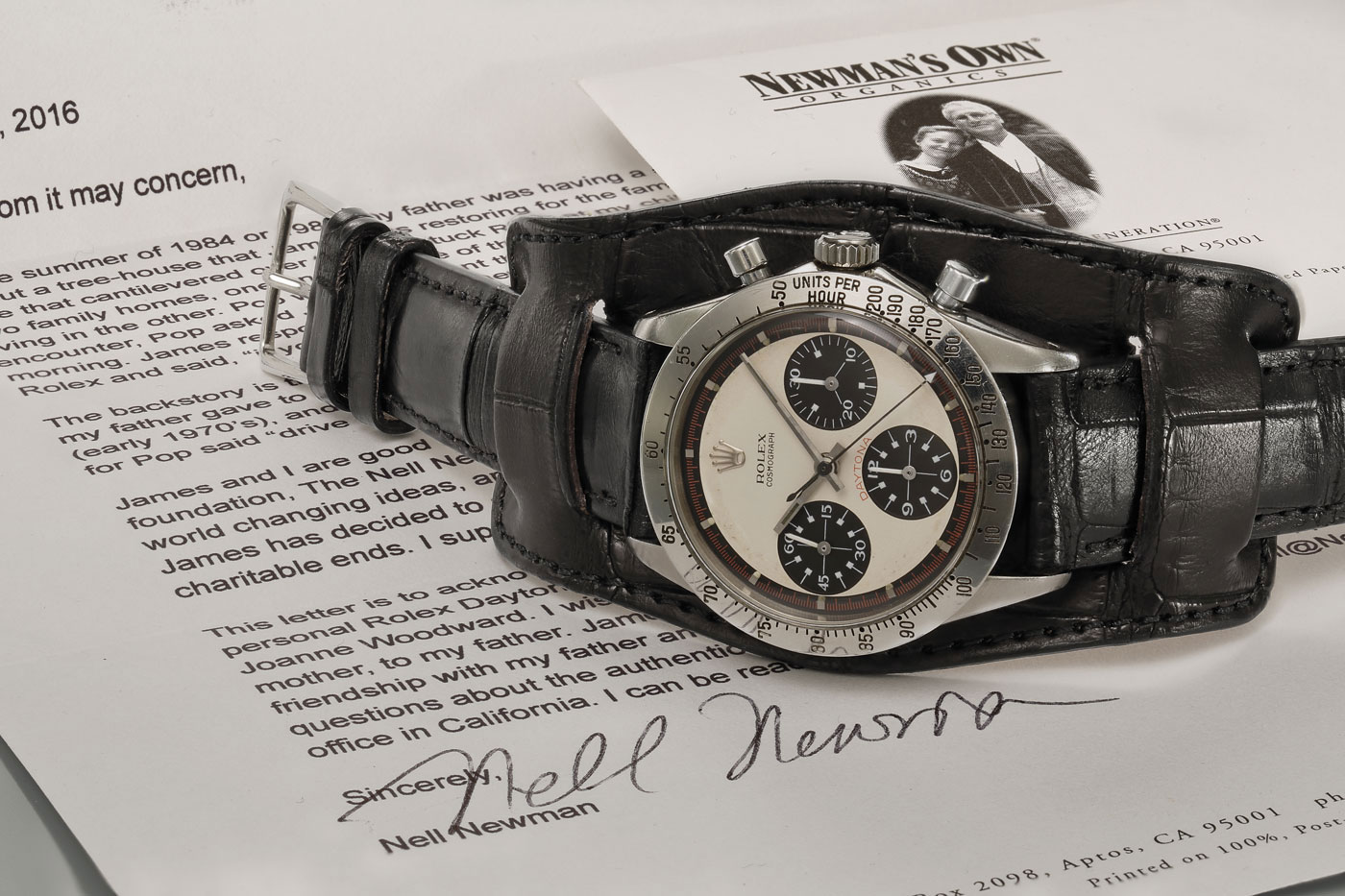
Watching the Race
Paul Newman Rolex Watch, $17,752,500
Phillips Auction, New York, October 26, 2017
Paul Newman's personal Rolex, the Paul Newman Daytona mechanical watch, sold for $17,752,500 at Phillips in New York, under the auspices of the firm's new watch division, Bacs & Russo. This watch was the holy grail of its type for collectors. The opportunity to own the watch that Paul Newman wore in the film "Racing," as well as in his daily life, was more than irresistible. According to Phillips' watch expert and senior vice president Paul Boutros, the auctioneer asked for an opening bid of $1 million. The next bid offered was $10 million, the biggest one-bid increment ever seen at a watch auction. Once the auctioneer recovered his composure, bidding proceeded with three competitors driving the price up to the record $17.7 million.
The watch, a Rolex mechanical model that went out of production in 1987, was owned for decades by James Cox, the one-time boyfriend of Nell Newman, Paul's daughter. According to the legend that turned out to be true, Paul Newman gave Cox the watch one day when Cox said he didn't know what time it was. Through the years that followed, during Paul Newman's lifetime and beyond, the watch was whispered about but scarcely seen and at one point, was believed to be lost.
Auctioneer Aurel Bacs gaveled the watch down after coaxing bids from telephone buyers over a very long 12 minutes. He called it the "Paul Newman Paul Newman," the only way to indicate that this particular watch with the coveted Daytona dial was the actual namesake of the Paul Newman Daytona dial that watch connoisseurs dreamed of.




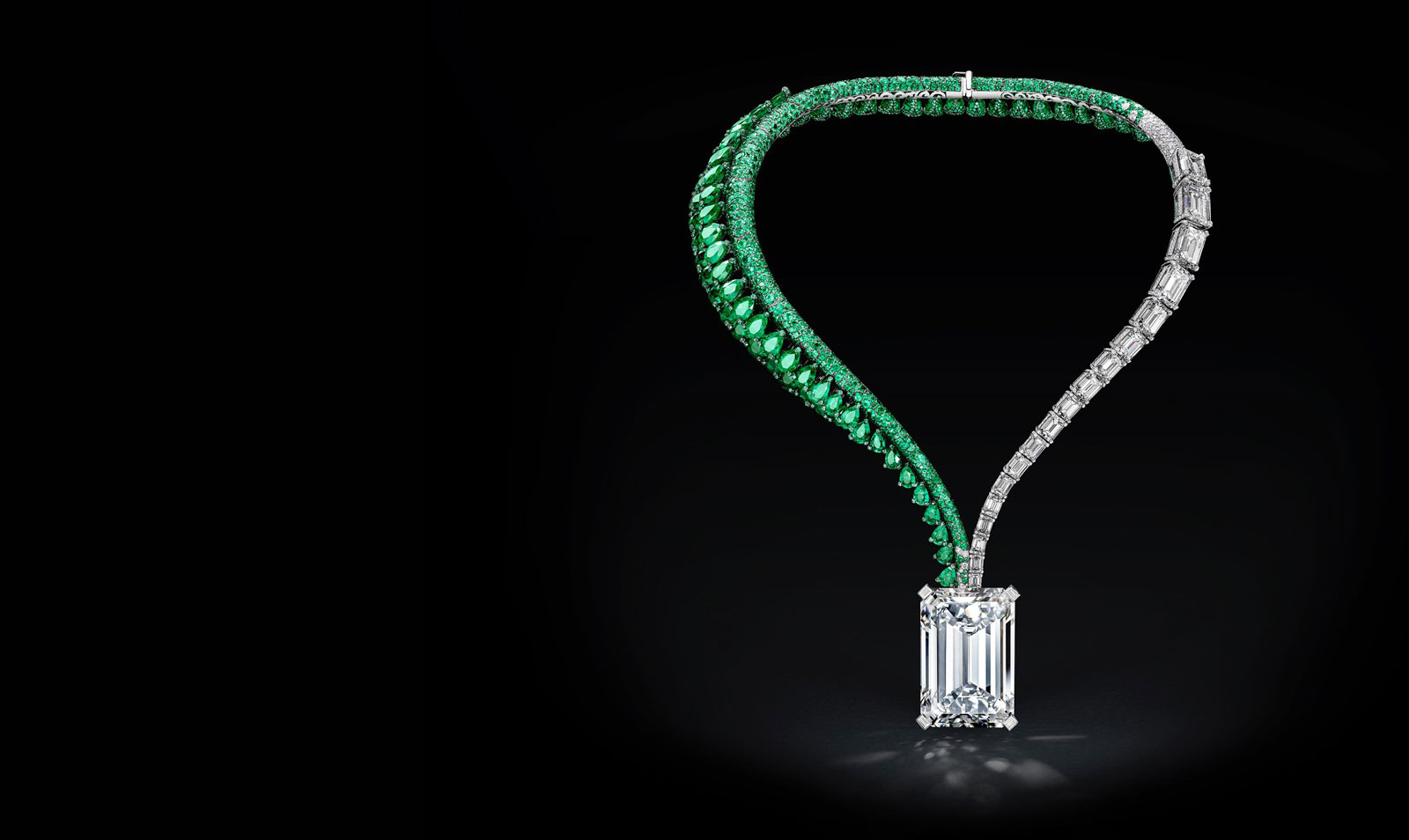


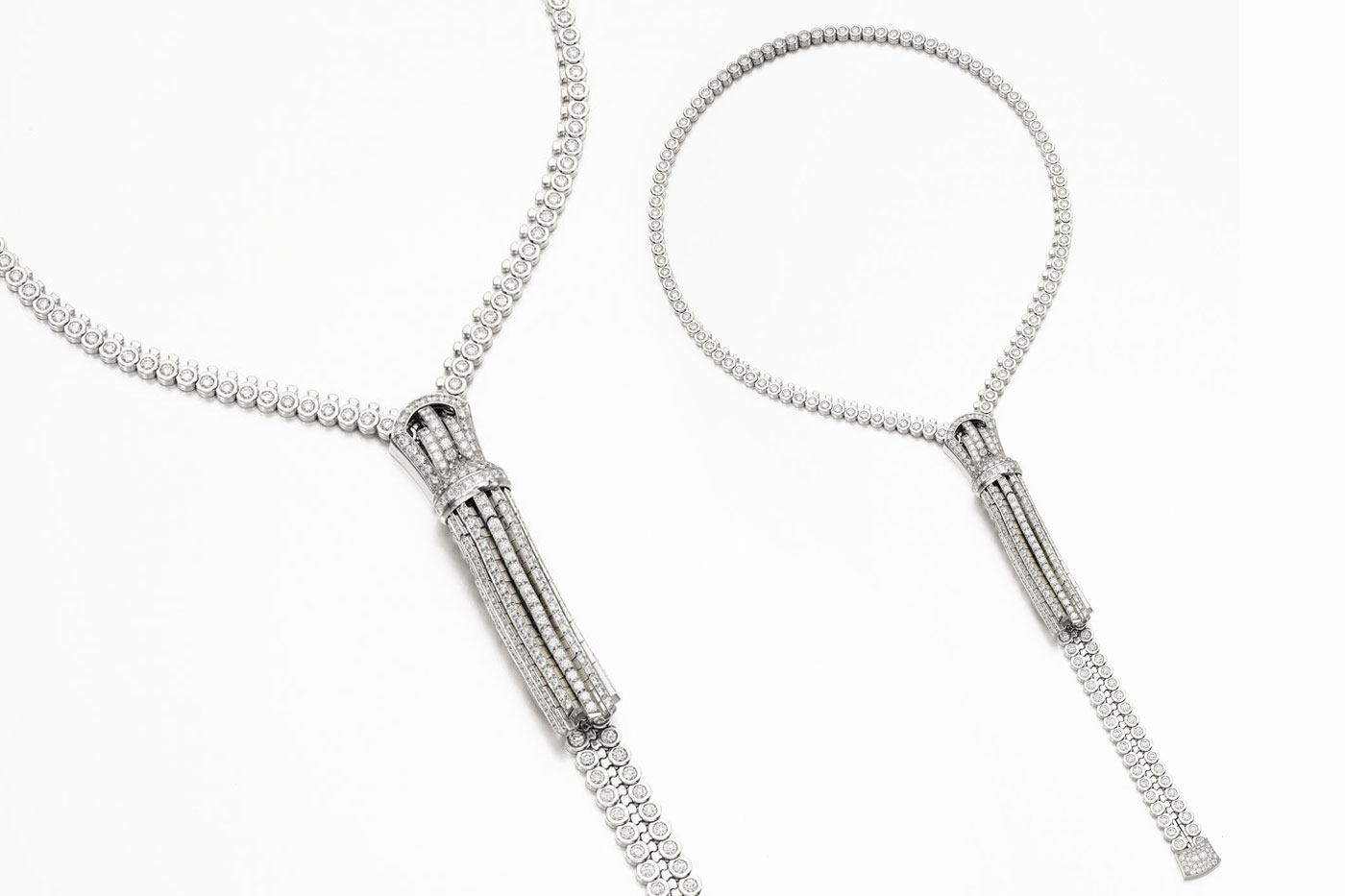
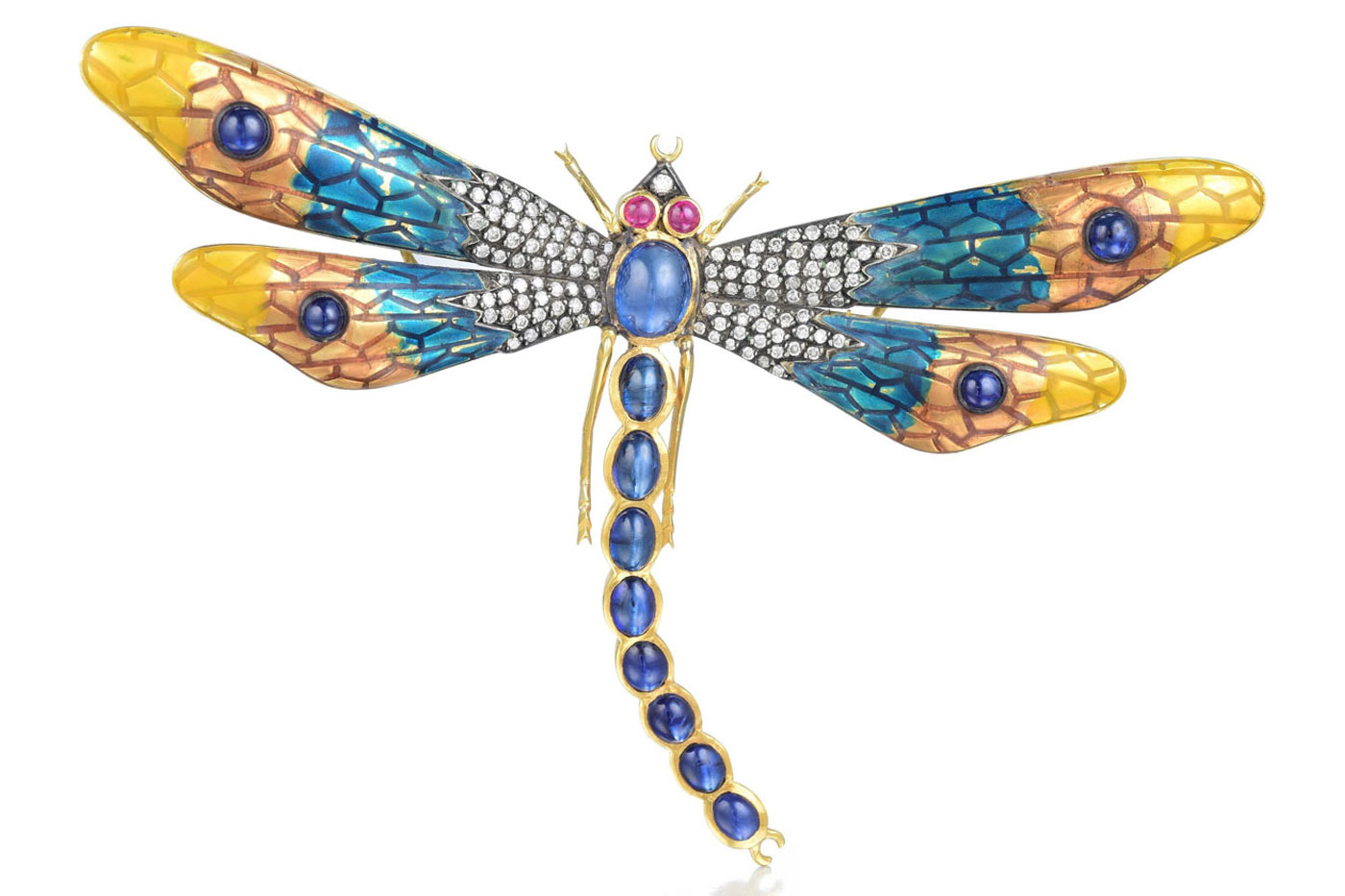


















![DEl Kathryn Barton [Australian b. 1972] the more than human love , 2025 Acrylic on French linen 78 3/4 x 137 3/4 inches 200 x 350 cm Framed dimensions: 79 7/8 x 139 inches 203 x 353 cm](/sites/default/files/styles/image_5_column/public/ab15211bartonthe-more-human-lovelg.jpg?itok=wW_Qrve3)



